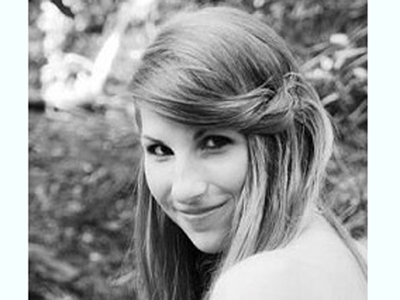
Missy Graff: Please describe your background. How did you become interested in jewelry?
Mariah Tuttle: How is someone not interested in jewelry? If they aren’t, maybe they’re not paying attention!
I actually began college with a dual focus in literature and furniture design. To complete my degree in applied design at San Diego State University, I needed to take introductory coursework in a variety of craft subjects including textiles, ceramics, and jewelry. When I took my first jewelry class, I realized I was ultimately interested in intimate spaces. Since then, I have earned my MFA in Jewelry + Metalsmithing from Rhode Island School of Design, reestablished my core relationship to writing and dialogue through my role as a contributing writer for Current Obsession magazine, continued to have an active studio, and pursued a relationship to the subject of jewelry that encompasses more of my broad interests and strengths.

Missy Graff: Please describe your background. How did you become interested in jewelry?
Mariah Tuttle: How is someone not interested in jewelry? If they aren’t, maybe they’re not paying attention!
I actually began college with a dual focus in literature and furniture design. To complete my degree in applied design at San Diego State University, I needed to take introductory coursework in a variety of craft subjects including textiles, ceramics, and jewelry. When I took my first jewelry class, I realized I was ultimately interested in intimate spaces. Since then, I have earned my MFA in Jewelry + Metalsmithing from Rhode Island School of Design, reestablished my core relationship to writing and dialogue through my role as a contributing writer for Current Obsession magazine, continued to have an active studio, and pursued a relationship to the subject of jewelry that encompasses more of my broad interests and strengths.

Can you tell me a bit about {x} collaborations and the people involved?
Mariah Tuttle: The summer after graduating from Rhode Island School of Design, several of us sat around a table in our new little studio, feeling the motley combination of exhilaration, bone-tired exhaustion, and a sense of disconnection. Someone mentioned seeing an announcement about an award one of our peers had received, and we collectively lamented how hard it was to really show our support for one another once we moved off into our new, separate directions. This lazy afternoon discussion continued for hours and we explored ideas about how to really support our peers while pursuing our own growth. It led to the foundation of {x} collaborations. The {x} is meant to symbolize dynamic possibility: sometimes we focus on {jewelry} or {public engagement} collaborations, sometimes it’s {dialogue} or {pushing boundaries} collaborations, or something else. The people involved fluctuate depending on the project. For on the horizon, I was the main curator and writer. Manuela Jimenez, Kendall Reiss, and Kamal Nassif have been helping with different aspects of the organization, publication, and installation of the show. At this point, most of the core people are Rhode Island School of Design alumni simply because of how it began—but, especially in the last year, we are meeting and working with a much broader group of international artists.
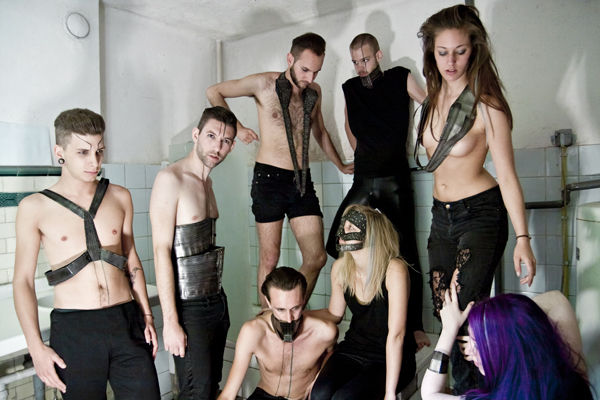
Describe your concept for on the horizon.
Mariah Tuttle: Ha! When trying to describe what fueled the desire to create the exhibition on the horizon, I can probably wax poetic and veer back and forth between bouts of academic musings and a strange mixture of geeky naiveté, with some sincere punk rebellion.
There are some delicious interpretations out there of what an exhibition can be. Some fail miserably; some are avant-garde or profound. on the horizon, truthfully, is none of these. The actual exhibition is rather quiet in presentation, which is meant to leave the work itself naked but so, so strong. The exhibition was meant to be the start of a conversation, an invitation, a snapshot, and a community builder. I want to push my peers forward and, equally, I want them to push back. As stated in the catalog, I want us to look at what is on the horizon and leap.
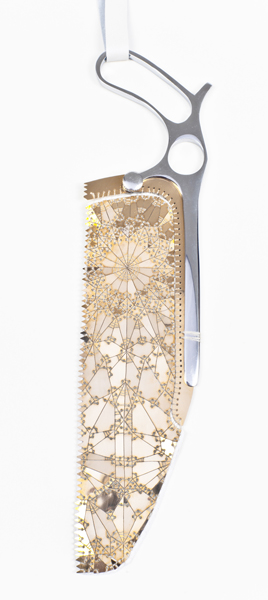
Can you tell us about the catalog that is being produced for this exhibition?
Mariah Tuttle: It’s lovely! A fundamental aspect of {x} collaborations is dialogue. If all we did was post images and links on our Facebook page and have occasional exhibitions of work, we wouldn’t really be engaging with, talking to, or learning from our peers. The catalog for on the horizon is a fundamental integration of the exhibition. Even if you aren’t lucky enough to go to Brooklyn Metal Works to see the work presented, the catalog is available as a permanent snapshot. Most importantly, beyond showing images of their jewelry, the artists discuss a wide variety of topics relating to their own work and the documentation of it, as well as thoughts about our larger jewelry community. Having a catalog with an integrated dialogue was a really vital part for me, and the artists were pretty excited about the concept as well. I hope to extend and explore variations of that dialogue in the future and include both the academic aspect as well as the more relaxed conversation around a late-night dinner table.
I understand that on the horizon consists of 11 emerging contemporary jewelers. How do you define “emerging”?
Mariah Tuttle: I don’t. One of the basic tenets of creating a platform to promote my peers is to not define them or what they are doing. This can of course become tricky when probed further, but I shy away from creating a formula that states emerging artists are of a certain age or a certain number of years out of school, because borders are limiting. It’s a relevant question, but at this point in the trajectory of {x} collaborations, so is an ambiguous answer.
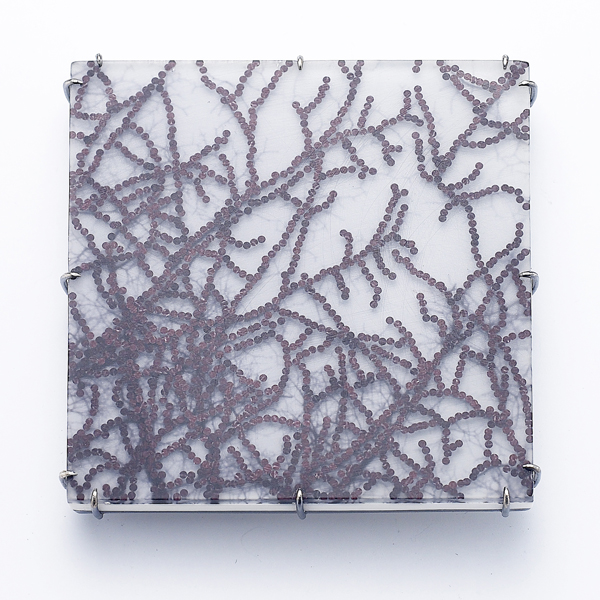
Mariah Tuttle: The many collectives, artist-run galleries, and pop-ups that continue to surface within the jewelry community are very interesting to me for all sorts of reasons. People are grouping together to ask questions and provide new answers. I think we are at the cusp of really exciting changes because of the innovation and creative spirit of collaborations such as A5, Space Jul, The Opulent Project, Jewellers Guild of Greater Sandringham, The Secret Formula, and others.
It seems to me that there are a number of different approaches to jewelry represented in this exhibition. Do you see any common elements between the works of these artists? What criteria did you use in the selection process?
Mariah Tuttle: This is a very interesting question and one I reflect on when considering how curating this exhibition has evolved and what it’s teaching me. At the beginning, we were actually focusing on the diversity of geographical representation of the artists, balanced by their equally broad investigations of jewelry. on the horizon has jewelers who are interested in value, humor, culture, history, process, materiality, the body, etc. However, as I opened the boxes and actually got to see the work as a physical grouping, I realized a bit about my own aesthetic. This was not a conscious commonality, but the work represents both sincere (and slightly insane) attention to detail and the counterbalance of a sort of irreverent playfulness.
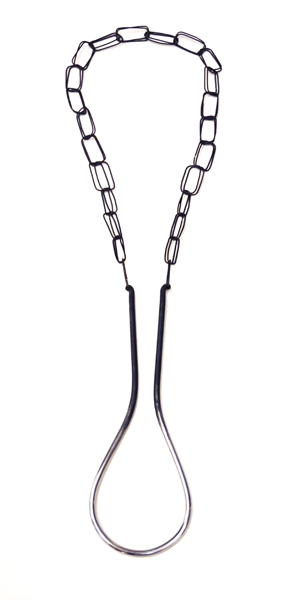
Mariah Tuttle: {x} collaborations has been the umbrella for quite a few projects that have been used to highlight and promote our peers. We have organized public engagement “mini lessons” with patrons of galleries. We created risdjm.com, which is a fairly extensive website that includes a RISD alumni directory with personal website links and updates about what people are doing. We also organized the exhibition earcandy at Alloy Gallery in Rhode Island, which included over 30 national and international emerging jewelers focusing on production work—earrings, to be precise.
Our future projects are a little more long term and involve developing more opportunities for dialogue between artists, as well as a variation on commerce opportunities and the pop-up model. We are also in the beginning stages of building a strong, international peer-to-peer support and exhibition model that is super-exciting. (More on that later!)
I completely adore and respect Erin S. Daily and Brian Weissman, the owners and directors of Brooklyn Metal Works. They are building the foundations for several fresh and exciting projects we hope to participate in.
